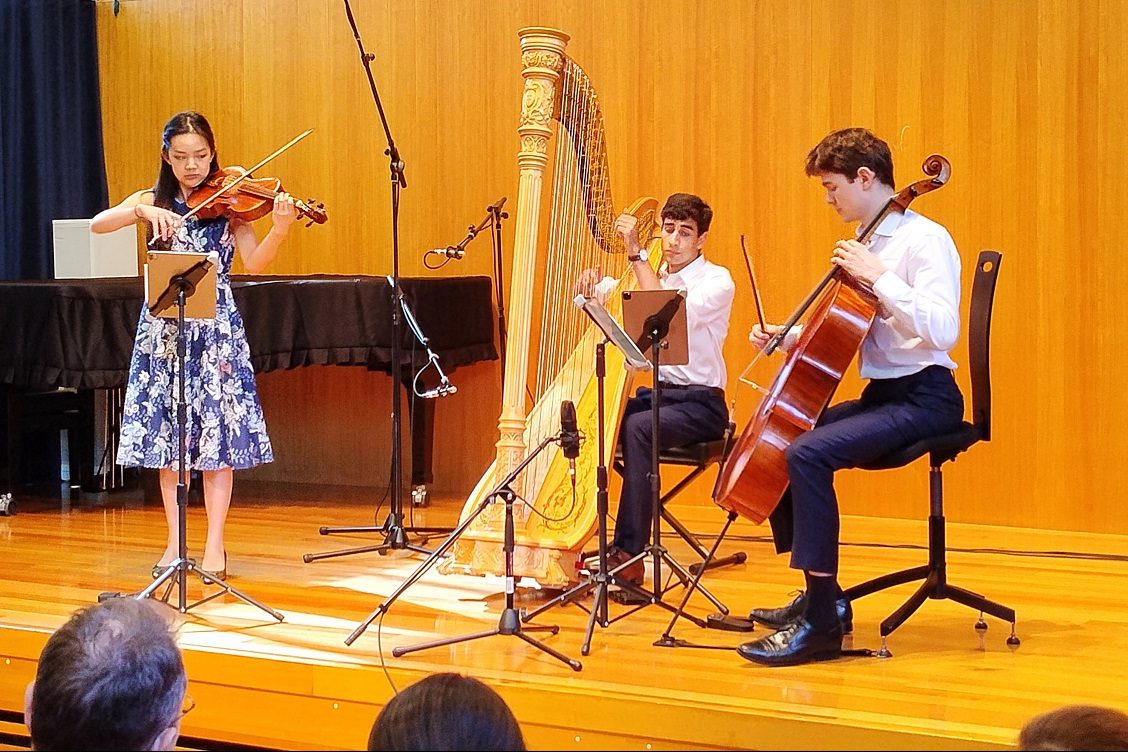DING Yi Music Company began its concert at Ainslie Arts Centre with music from a carefree Mongolian life. Traditional instruments evoked horses running over the plains, in “Heavenly Grassland” by Wang Dan Hong, one of two young composers in the program.

Three single-movement works by Sim Boon Yew, Ning Yong and Liong Kit Yeng presented folk music arrangements from various locations. “Camel Bells along the Silk Road”, by Ning Yong, was particularly beautiful with Jinweng Kenny Chan drawing expressive bell tones from the ruan, and Kaisiang Eugene Toh exploring a full range of colour with a snakeskin frame drum.
The central works of “The Lion’s Roar”, however, were two three movement works by the highly respected festival composer-in-residence, Chen Yi. The musical direction of Quek Lingkiong was striking in these very avant-garde works. Yi’s “Three Dances from China South”, for dizi, erhu, pipa and guzheng, explored the techniques of mid-20th century modernism – the simple pentatonicism of the opening soon broadened to full dodecaphony. Harmonies borrowed from late Stravinsky, lent a mysterious and stately mood to the first of the dances “Guangdong” (Lions Playing Ball). Where the second dance “Hainan” (Bamboo Dance) presented sparse textures and finely chosen rhythmic utterances, the closing dance “Guangxi” (Lusheng Dance) unfolded a climax of ostinati and cells, almost Lutoslawski in its fine orchestration.
Chen Yi’s second work “Chinese Fables”, was equally accomplished in its composition. The opening fable, “The Fox Profited by the Tiger’s Might”, could’ve come from one of Penderecki’s masterclasses. A foreboding opening constructed of accented motion-clusters gave way to a freely atonal harmonic space, dramatically controlled by Yi’s subtle understanding of silences.
“Master Dong-guo and the Wolf”, the second fable, showcased Chin Yenchoong’s expressive erhu playing. This quirky movement, characterised by comment and refrain in percussion, ended with Yenchoong’s magnificent erhu weeping for the wolf who was eaten by a bear. The final fable, “The Snipe and the Clam”, revealed an expansive palette of timbres from the opening wooden rattle, a backdrop for Chua Yewkok’s stunning pipa playing, through to the full force of the ensemble. Again Yi’s beautiful use of silence was at the forefront.
Yi’s “Chinese Fables” are works of modern art, belonging just as much in the concert halls of Europe as they do in a Chinese market. This was the first time an ensemble from Singapore has been included in the Canberra International Music Festival but, judging from the audience response, it won’t be the last.
Who can be trusted?
In a world of spin and confusion, there’s never been a more important time to support independent journalism in Canberra.
If you trust our work online and want to enforce the power of independent voices, I invite you to make a small contribution.
Every dollar of support is invested back into our journalism to help keep citynews.com.au strong and free.
Thank you,
Ian Meikle, editor




Leave a Reply